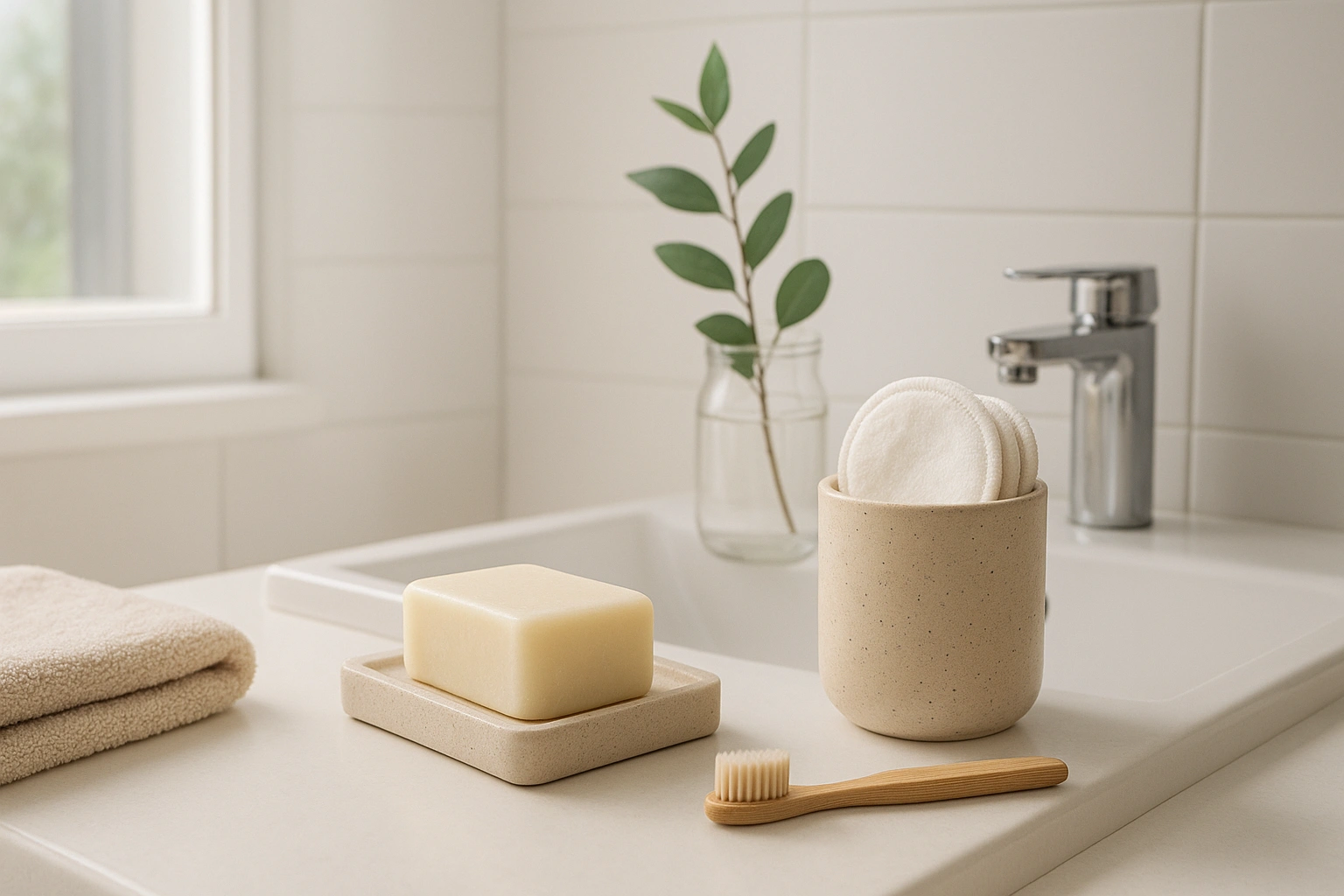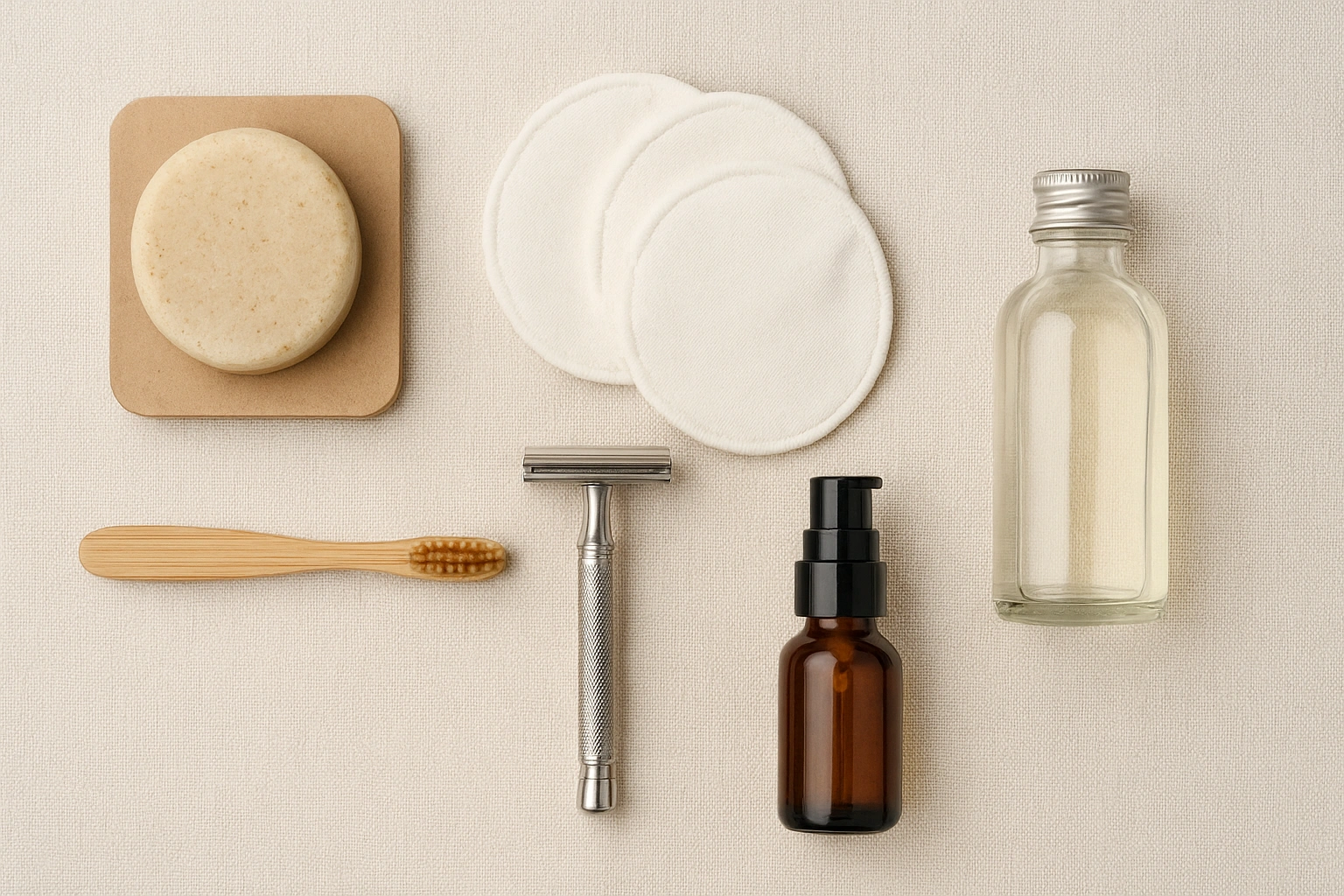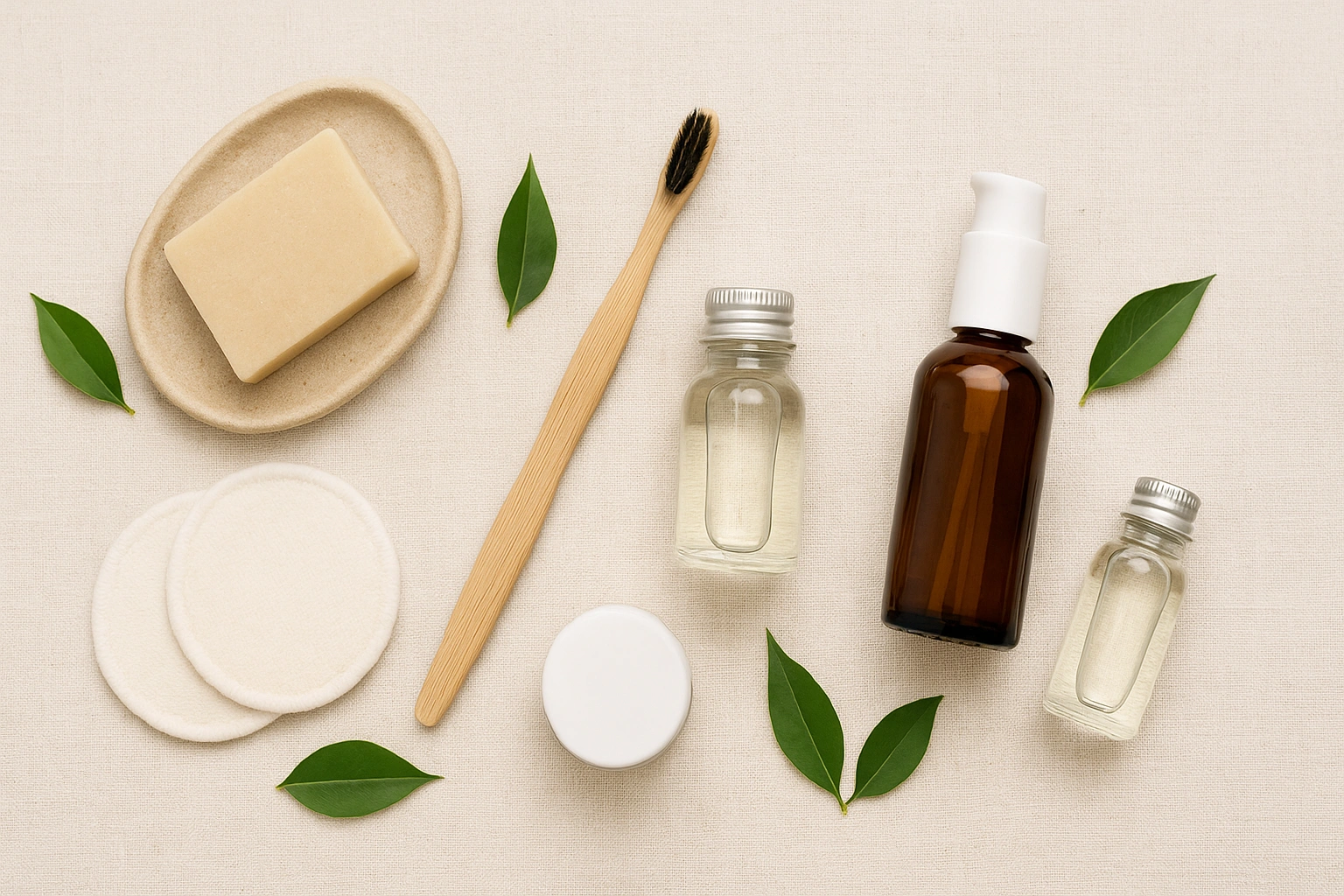- Introduction: Is Your Beauty Routine Trashing the Planet?
- What Defines a Sustainable Beauty Routine?
- Why Bother? The Real-World Benefits
- How to Build Your Sustainable Beauty Routine: A 5-Step Guide
- My First Sustainable Swaps: A Real-Life Test
- Common Mistakes to Avoid When Going Green
- Expert Tips for an Effortless Routine
- Frequently Asked Questions (FAQ)
- Conclusion: Your Small Steps Make a Big Difference
Introduction: Is Your Beauty Routine Trashing the Planet?
You recycle your groceries, carry a reusable water bottle, and try to cut down on waste. But have you ever considered how a sustainable beauty routine could reduce the environmental footprint of your daily habits?
From plastic-wrapped serums to single-use makeup wipes, the beauty industry has a massive waste problem. Building a sustainable beauty routine helps you avoid these hidden sources of trash and replace them with cleaner, more thoughtful choices.
A recent study found that a majority of consumers are now actively seeking sustainable products, yet many feel overwhelmed and don’t know where to start. By focusing on a simple sustainable beauty routine, it becomes easier to take small steps that make a big difference.
With the right mindset, a sustainable beauty routine is not about perfection, but about progress—choosing swaps that fit your lifestyle while caring for the planet.
If you want to make a change but feel paralyzed by choice, this guide is for you. It will help you understand how a sustainable beauty routine can start with small, manageable steps that don’t feel overwhelming.
We’re breaking down exactly how to build a sustainable beauty routine at home with simple, practical, and budget-friendly swaps, making it easier to care for yourself and the planet.
By the end, you’ll see how a sustainable beauty routine allows you to reduce waste, simplify your collection, and make choices that genuinely feel rewarding.
Most importantly, a sustainable beauty routine gives you an action plan to reduce your impact, declutter your life, and create habits that align with your values every day.
What Defines a Sustainable Beauty Routine?
A sustainable beauty routine is a conscious approach to personal care that prioritizes minimizing environmental harm. It’s less about buying a whole new set of “eco” products and more about shifting your habits. The core philosophy is to **reduce, reuse, and rethink** every step of your routine, from how you wash your face to how you dispose of empty containers.
This movement is gaining serious momentum. As reported by sources like Forbes, consumers are driving a massive shift towards brands that are transparent and environmentally responsible. A truly sustainable routine incorporates **eco-friendly skincare tips** like choosing multi-purpose products, opting for refillable packaging, and supporting brands with ethical practices.

Why Bother? The Real-World Benefits
This is about more than just feeling good; it has tangible benefits for your life.
Save Significant Money in the Long Run
Sustainable choices are often more economical. A shampoo bar can outlast three bottles of liquid shampoo, a one-time purchase of reusable makeup rounds saves you from buying disposable wipes forever, and focusing on multi-purpose products means you buy less overall. Your wallet will thank you.
Reduce Your Exposure to Harmful Chemicals
Sustainable beauty often overlaps with clean beauty. By simplifying your routine and choosing products with shorter, more natural ingredient lists, you inherently reduce your exposure to potentially harmful preservatives, fragrances, and fillers found in many mass-market products.
Make a Measurable Environmental Impact
Every plastic bottle you refuse and every single-use wipe you avoid makes a difference. Collectively, these small actions prevent tons of waste from entering our ecosystems. You become part of the solution, not the problem. This mindset is crucial for developing better [innovative solutions](https://airobotics.biz.id/) for our planet.
How to Build Your Sustainable Beauty Routine: A 5-Step Guide

Follow these steps to make a smooth and effective transition.
Step 1: Audit Your Current Collection (The “Shop Your Stash” Phase)
Before you buy anything, take stock of what you already own. Pull everything out. What do you actually use? What’s expired? The most sustainable product is the one you already have, so commit to using things up before replacing them.
Step 2: Identify Your Biggest Waste Sources
What do you throw away most often? For many, it’s cotton pads, makeup wipes, or plastic shampoo bottles. Pinpointing your top 1-3 sources of waste will give you a clear starting point for making impactful swaps.
Step 3: Make Simple, High-Impact Swaps
Start with easy wins. Replace your disposable items with reusable alternatives. This is the easiest and often cheapest way to begin.
- Swap makeup wipes for a washcloth and a cleansing balm.
- Swap cotton balls for reusable, washable cotton rounds.
- Swap disposable razors for a safety razor with recyclable blades.
Step 4: Rethink Your Product Choices
As you run out of products, replace them with more sustainable options. Look for products that are solid/waterless, come in refillable packaging, or are housed in easily recyclable materials like glass or aluminum.
Step 5: Embrace a Minimalist & Multi-Purpose Mindset
Do you really need a separate cream for your eyes, neck, and face? Challenge the idea that you need a dozen different products. A good quality facial oil can be a moisturizer, makeup remover, and cuticle oil all in one. Less consumption is the ultimate form of sustainability.
My First Sustainable Swaps: A Real-Life Test
My biggest source of daily waste was makeup wipes. I swapped them for a set of reusable bamboo cotton rounds and a cleansing balm in a tin. The ritual of massaging the balm into my skin and wiping it away with a warm, damp round felt far more luxurious than a disposable wipe. It removed my makeup more effectively and left my skin feeling soft, not stripped.
| Pros of the Swap | Cons of the Swap |
|---|---|
| Completely eliminated a daily source of trash. | Requires washing the rounds regularly. |
| Saved money after the initial investment. | The cleansing balm was more expensive upfront than a pack of wipes. |
| My skin felt much healthier and less irritated. | Adds an extra minute or two to my nightly routine. |
Common Mistakes to Avoid When Going Green
| Myth (The Mistake) | Fact (The Solution) |
|---|---|
| “I have to throw everything out and start over.” | This is the least sustainable thing you can do! Use up what you have first. The goal is to reduce future waste, not create more now. |
| “I need to buy all new ‘eco’ products.” | Sustainability is about consuming less. Focus on reusable tools and multi-purpose products before buying a whole new routine. |
| “If it says ‘natural’ or ‘green’, it must be sustainable.” | This is “greenwashing.” Look for proof: certifications, details on packaging, and transparency about sourcing. Don’t just trust marketing buzzwords. |
Expert Tips for an Effortless Routine
Make your routine stick with these pro tips.
- Designate a “To-Wash” Bag: Keep a small mesh bag in your bathroom for used cotton rounds and cloths to make laundry day easy.
- Learn Your Local Recycling Rules: Not all plastics are created equal. Check your local municipality’s website to see what is actually recyclable in your area.
- Follow Brands with Take-Back Programs: For hard-to-recycle items, many brands partner with services like TerraCycle. Save your empties and send them back.
- Master a Few Simple DIYs:
“You don’t need to be a chemist to make a great face mask,” says clean beauty expert Jenna Claiborne. “A simple mix of honey and turmeric is a powerful anti-inflammatory. Focus on simple, food-grade ingredients.”
Frequently Asked Questions (FAQ)
Q: Where is the best place to start a sustainable beauty routine on a budget?
A: The best place to start is by using up what you already have. After that, focus on simple, low-cost swaps like using a washcloth instead of makeup wipes or switching to a shampoo bar, which lasts much longer than a liquid bottle.
Q: Is DIY skincare safe and effective?
A: Simple DIY recipes like an oat mask or a coffee scrub are generally safe and effective. However, avoid using harsh ingredients like pure lemon juice or baking soda. For more complex products like serums or moisturizers, it’s often safer to buy from a reputable sustainable brand.
Q: How do I properly recycle beauty product packaging?
A: First, check your local recycling guidelines. Make sure to completely clean out any remaining product from containers. For complex parts like pumps or droppers, check if the brand has a mail-back program like those offered through TerraCycle, as these are often not recyclable curbside.
Conclusion: Your Small Steps Make a Big Difference
Building a sustainable beauty routine isn’t about achieving perfection overnight; it’s about progress, not pressure. Each small step in your sustainable beauty routine creates momentum that feels natural and rewarding.
It’s about making a series of small, intentional choices that shape your sustainable beauty routine into something simple yet impactful for both you and the environment.
By auditing your habits, making mindful swaps, and slowly adjusting, a sustainable beauty routine becomes less about restriction and more about aligning with your values.
In the end, a sustainable beauty routine lets you enjoy products that are effective and enjoyable, while also showing respect for the planet in every choice you make.
What’s the first change you’re inspired to make in your routine? Share your goals in the comments below!
